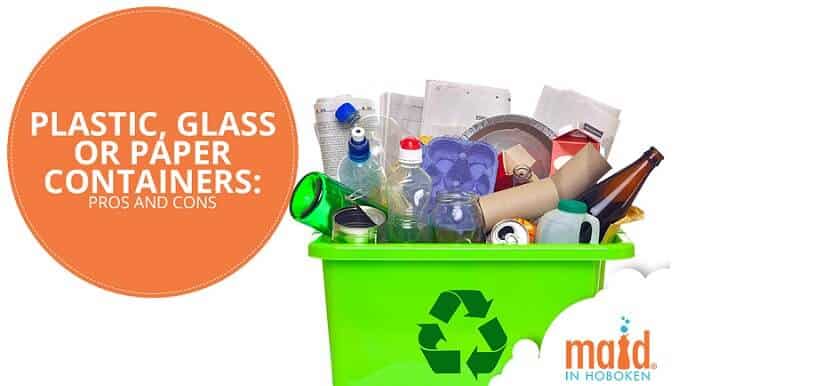Unless properly sealed, stored, and refrigerated, most foods will become a breeding ground for bacteria in no time, which can put your family at risk from the spoilage. The ideal time between preparation and cold storage is two hours, but what’s the best way to store these leftovers and avoid potential contamination? Well, there are plenty of options out there, but surely you’re only interested in using the very best.
The food container discussion usually revolves around the material these containers are made of, the most common being plastic and metal, with wood-derived products such as cardboard or paper being used occasionally. We’ll go over the pros and cons of one over the other and let you choose which one you think is better for you and your family, and we’ll also include some benefits of proper food storage containers.
Overall benefits
It should be pretty obvious by now that food containers will keep your food and leftovers clean, fresh, and nutritious for a long time, but there are some extra qualities in them that you should know about. Storing extra food can save you money in the long run by avoiding the need for preparing something new every single day, which will also help you reduce food waste. It’s also the best way to store your pantry items, such as spices, flour, grains, seeds, and nuts, extending their useful life way longer than when stored in their original package.
Last but not least, reusable containers are much more environmentally friendly than single-use containers, and avoiding foods that come prepackaged when there’s no need for it will reduce your family’s footprint by a large margin.
Glass Containers
We’ll start out this entry by saying that, overall, glass containers do have an advantage when it comes to the number of benefits they have over plastic, and make for the safest food storage containers. This, however, doesn’t mean they’re the clear winners here; like many things, it mostly depends on your situation and preferences.
Perhaps the most important factor in favor of glass over plastic containers is that glass is safer for food storage since it doesn’t release harmful chemicals into the food. The release of toxins usually occurs in plastic containers when exposed to high temperatures (such as warming up in the microwave, or when storing hot food inside) or just from extended, repeated use, which makes them a more limited useful life than glass. On the same vein, glass is not porous, which means that it won’t absorb any bad odors as plastic does, and it won’t get warped.
Glass containers, because of their longer life, are much more eco-friendly than plastic ones. Going as plastic-free as possible in your daily habits makes a huge difference to the environment, and because glass can be recycled in a much more cost-effective manner than plastic does, regardless of age. This is because a glass container won’t get melted, burned, charred or otherwise warped from use, compromising how easily it can be recycled.
Finally, glass is overall better looking than plastic, and while this might seems like a superficial reason, it’s more important than you think. Plastic, through repeated use, will start to look brittle and dry, and people are very visual when it comes to eating; even when the food is perfectly fine, and the iffy-looking container won’t stimulate anyone’s appetite, especially guests. A glass container, on the other hand, has transparency, which lets people look at the whole dish that’s being served or stored, and can go on looking like new for decades, giving your food more appeal every time you take it out.
Plastic Containers
Though few, plastic does offer some advantages over glass, and it’s mostly about the convenience. For starters, plastic containers are much cheaper than glass ones, even the high-end ones, so they work well on a budget. This is especially true when you talk about replacing damaged containers; for all the benefits it has, glass is still a fragile material, so a hard enough it will crack or break it, and getting a new one can be costly.
Plastic is also much lighter than glass, so it can be a better option to take food on the go or to pack your lunch if plastic containers are too fragile or heavy for your work area. Even the cheapest plastic containers can take a roughing with little to no problem or spillage if properly sealed, more than even the best glass food storage containers.
Variety is perhaps the biggest advantage that plastic food containers have over glass ones. Since they’re the most widely used, it follows that they also come in the widest variety of shapes and sizes, which can accommodate most of your and your family's storage needs.
Paper Containers
Paper food containers are not meant to be used as a long-term solution, but they can be pretty useful when handling any type of food that’s meant for quick consumption and you don’t want to use your other containers on. Takeout is perhaps the most classic example, since your goal is to clear it out of the fridge quick and it’s probably not worth getting a plastic or glass container dirty for it, but you can also prepare food for a picnic or beach trip on paper containers; make sure to use biodegradable paper containers and dispose of them in the proper cans.
The glass over plastic or plastic over glass debate is one of convenience, and we’re still at a point where that varies wildly from one family to the next. Whatever your needs are, we hope this little guide helped you make up your mind; both will look great on a clean, tidy kitchen anyway!





